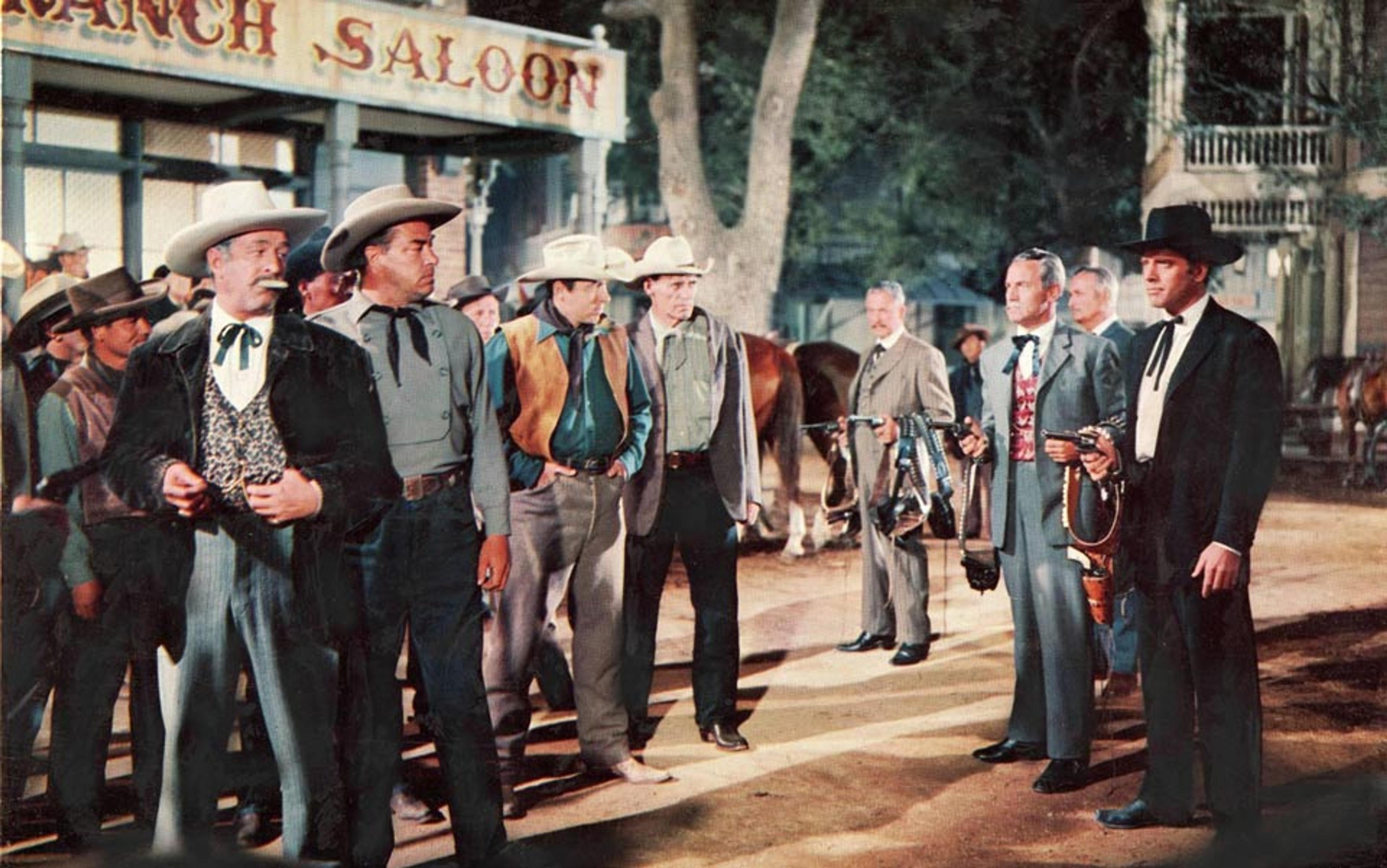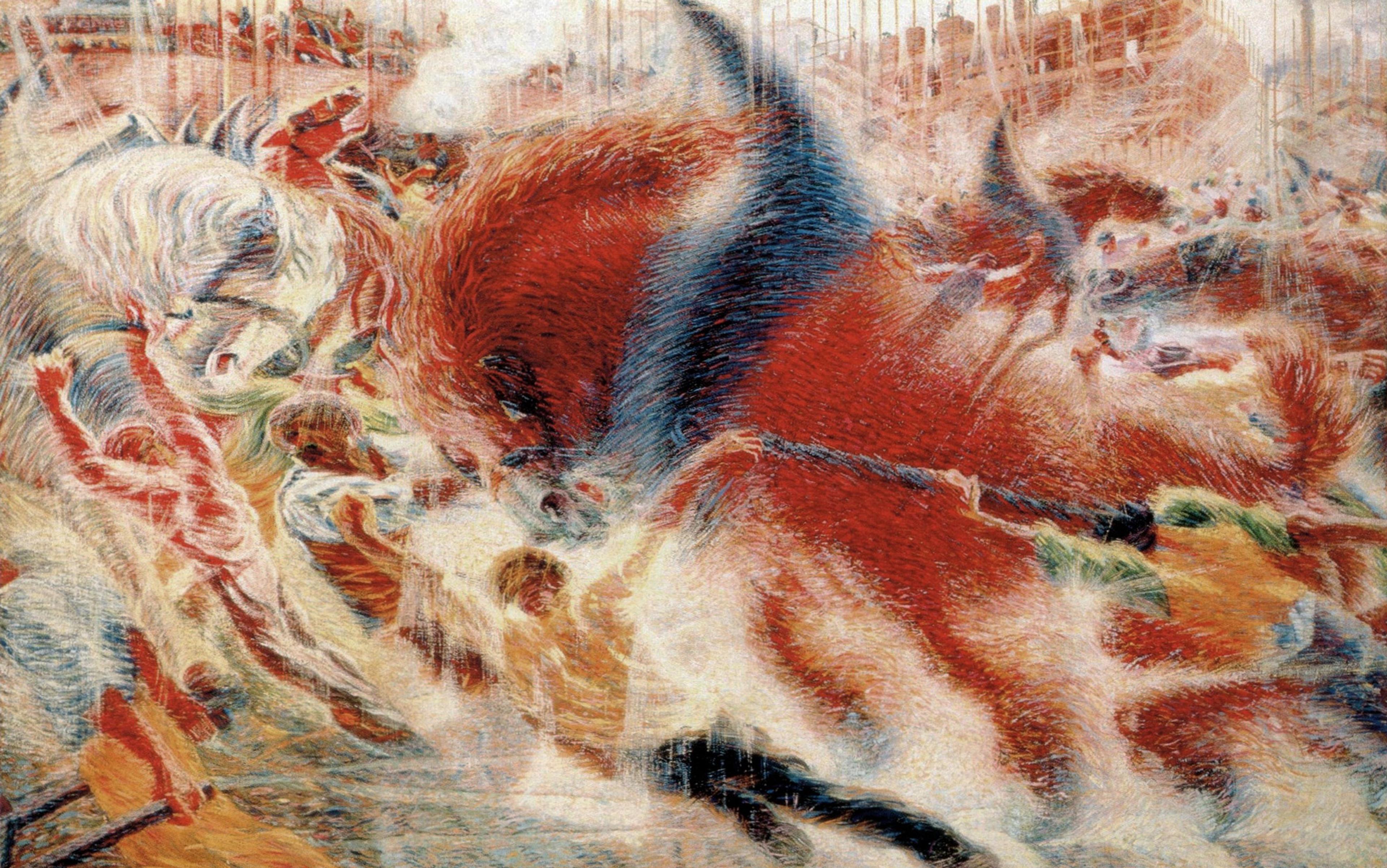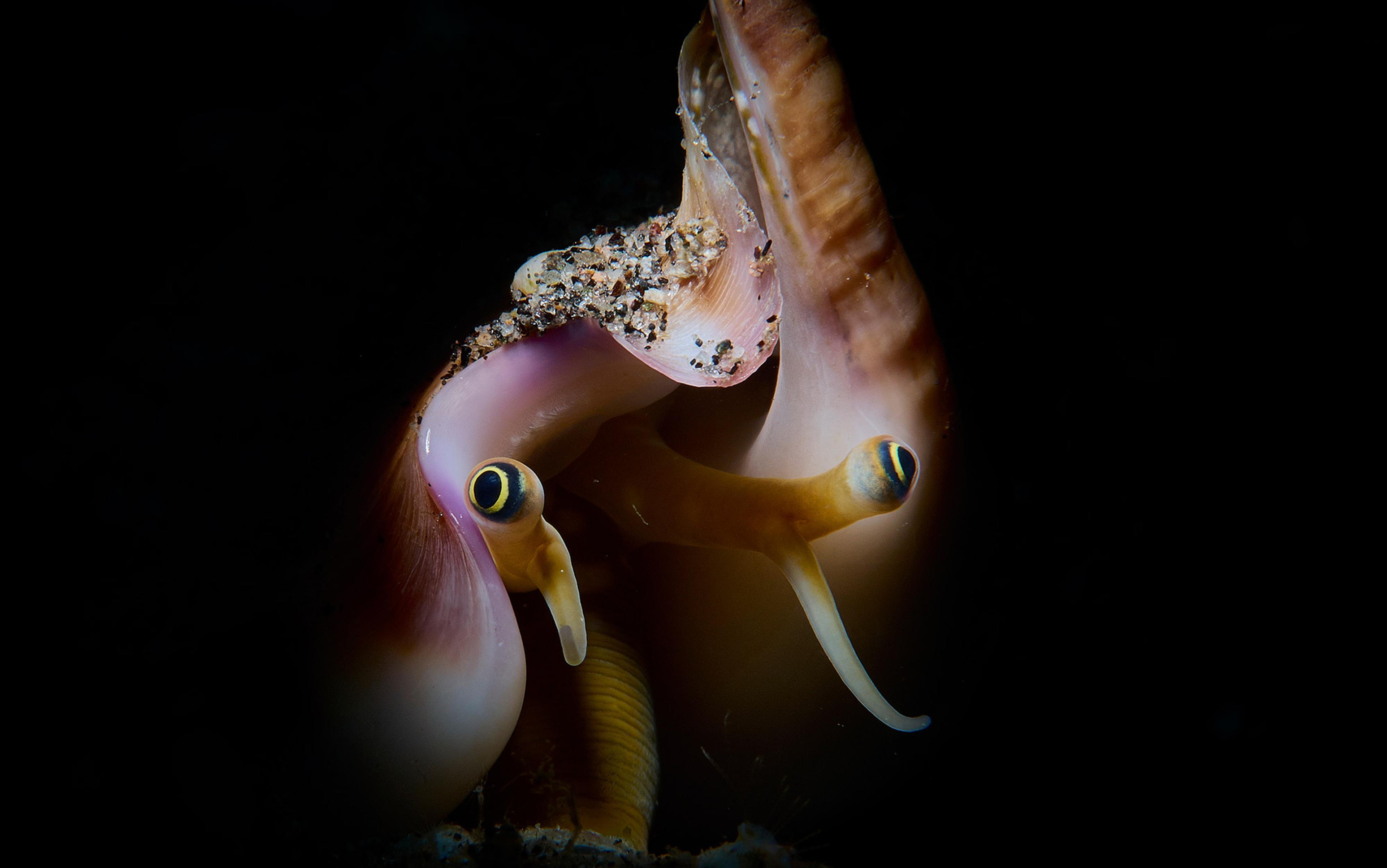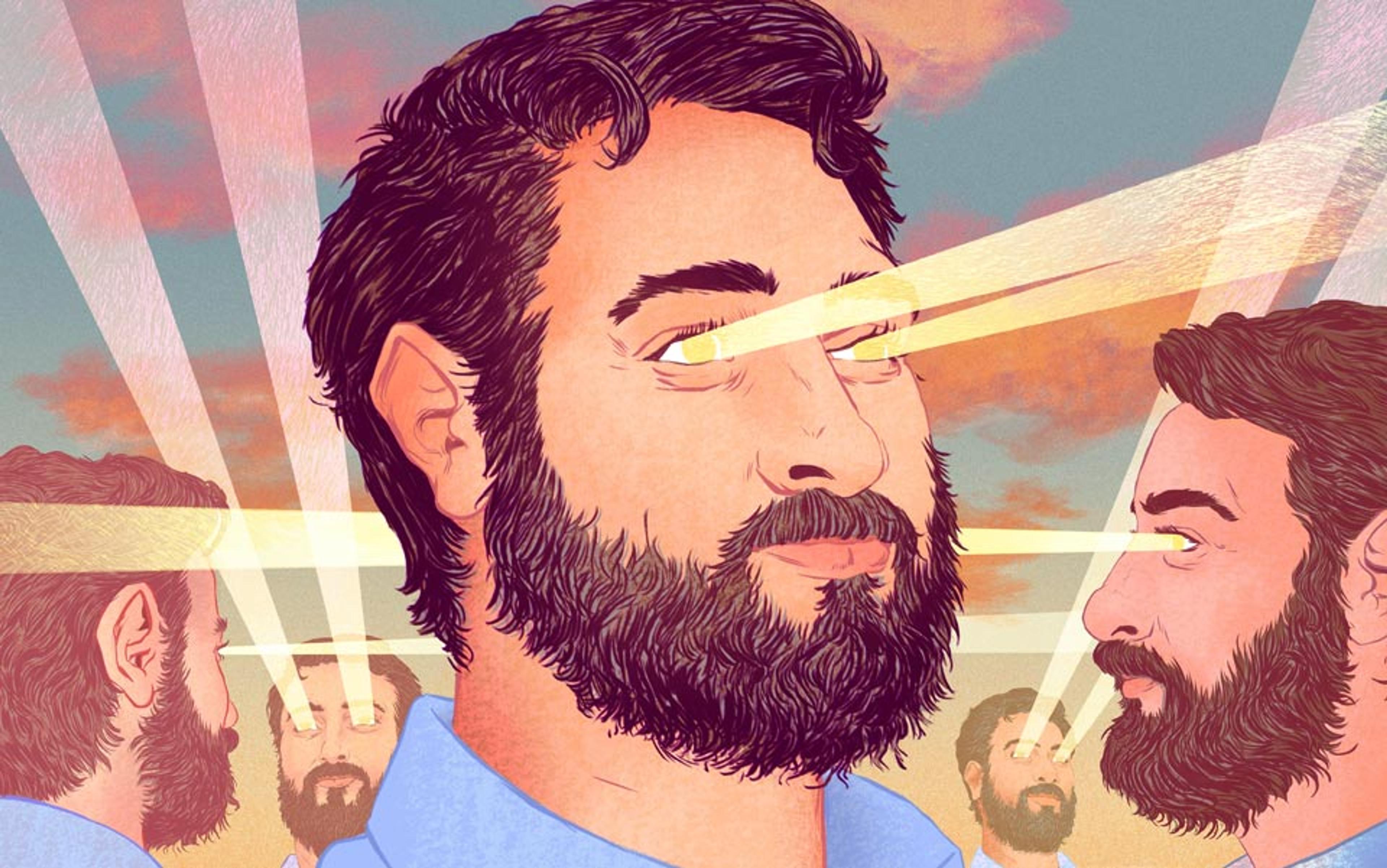The cover of New Scientist magazine 50 years ago showed a picture of a rhesus monkey, with the headline ‘A Blind Monkey That Sees Everything’. The monkey, named Helen, was part of a study into the neuropsychology of vision, led by Lawrence (Larry) Weiskrantz in the psychology laboratory at the University of Cambridge. In 1965, he had surgically removed the primary visual cortex at the back of Helen’s brain. Following the operation, Helen appeared to be quite blind. When, as a PhD student, I met her a year later, it seemed nothing had changed.
But something puzzled me. In mammals, there are two main pathways from the eye to the brain: an evolutionarily ancient one – the descendant of the visual system used by fish, frogs and reptiles – that goes to the optic tectum in the mid-brain, and a newer one that goes up to the cortex. In Helen, the older visual system was still intact. If a frog can see using the optic tectum, why not Helen?
While Weiskrantz was away at a conference, I took the chance to investigate further. I sat with Helen and played with her, offering her treats for any attempt to engage with me by sight. To my delight, she began to respond. Within a few hours, I had her reaching out to take pieces of apple from my hand; within a week, she was reaching out to touch a small flashing light… Seven years later (as shown in the video below), she was running round a complex arena, deftly avoiding obstacles, picking up peanuts from the floor.
To anyone who’d observed Helen in 1972 – and didn’t know the history – it would have seemed that her eyesight was now quite normal. Yet, could she really ‘see everything’, as the New Scientist’s cover implied? I didn’t think so. I found it hard to put my finger on what was missing. But my hunch was that Helen herself still doubted she could see. She seemed strangely unsure of herself. If she was upset or frightened, her confidence would desert her, and she would stumble about as if in the dark again. The title I gave to my article inside the covers of the magazine was ‘Seeing and Nothingness’.
We were on the brink of a remarkable discovery. Following on from the findings with Helen, Weiskrantz took a new approach with a human patient, known by the initials DB, who, after surgery to remove a growth affecting the visual cortex on the left side of his brain, was blind across the right-half field of vision. In the blind area, DB himself maintained that he had no visual awareness. Nonetheless, Weiskrantz asked him to guess the location and shape of an object that lay in this area. To everyone’s surprise, he consistently guessed correctly. To DB himself, his success in guessing seemed quite unreasonable. So far as he was concerned, he wasn’t the source of his perceptual judgments, his sight had nothing to do with him. Weiskrantz named this capacity ‘blindsight’: visual perception in the absence of any felt visual sensations.
Blindsight is now a well-established clinical phenomenon. When first discovered, it seemed theoretically shocking. No one had expected there could possibly be any such dissociation between perception and sensation. Yet, as I ruminated on the implications of it for understanding consciousness, I found myself doing a double-take. Perhaps the real puzzle is not so much the absence of sensation in blindsight as its presence in normal sight? If blindsight is seeing and nothingness, normal sight is seeing and somethingness. And surely it’s this something that stands in need of explanation.
Why do visual sensations, as experienced in normal vision, have the mysterious feel they do? Why is there any such thing as what philosophers call ‘phenomenal experience’ or qualia – our subjective, personal sense of interacting with stimuli arriving via our sense organs? Not only in the case of vision, but across all sense modalities: the redness of red; the saltiness of salt; the paininess of pain – what does this extra dimension of experience amount to? What’s it for? And, crucially, which animals besides ourselves experience it, which are sentient?
Why is a sensation ‘like’ something? Is it because conscious sensation is like something it cannot really be?
Sensation, let’s be clear, has a different function from perception. Both are forms of mental representation: ideas generated by the brain. But they represent – they are about – very different kinds of things. Perception – which is still partly intact in blindsight – is about ‘what’s happening out there in the external world’: the apple is red; the rock is hard; the bird is singing. By contrast, sensation is more personal, it’s about ‘what’s happening to me and how I as a subject evaluate it’: the pain is in my toe and horrible; the sweet taste is on my tongue and sickly; the red light is before my eyes and stirs me up.
It’s as if, in having sensations, we’re both registering the objective fact of stimulation and expressing our personal bodily opinion about it. But where do those extra qualitative dimensions come from? What can make the subjective present created by sensations seem so rich and deep, as if we’re living in thick time? What can the artist Wassily Kandinsky mean when he writes: ‘Colour is a power which directly influences the soul. Colour is the keyboard, the eyes are the hammers, the soul is the piano with many strings’? Why indeed do people use the strange expression ‘it’s like something to’ experience sensations? Is it because conscious sensations are like something they cannot really be?
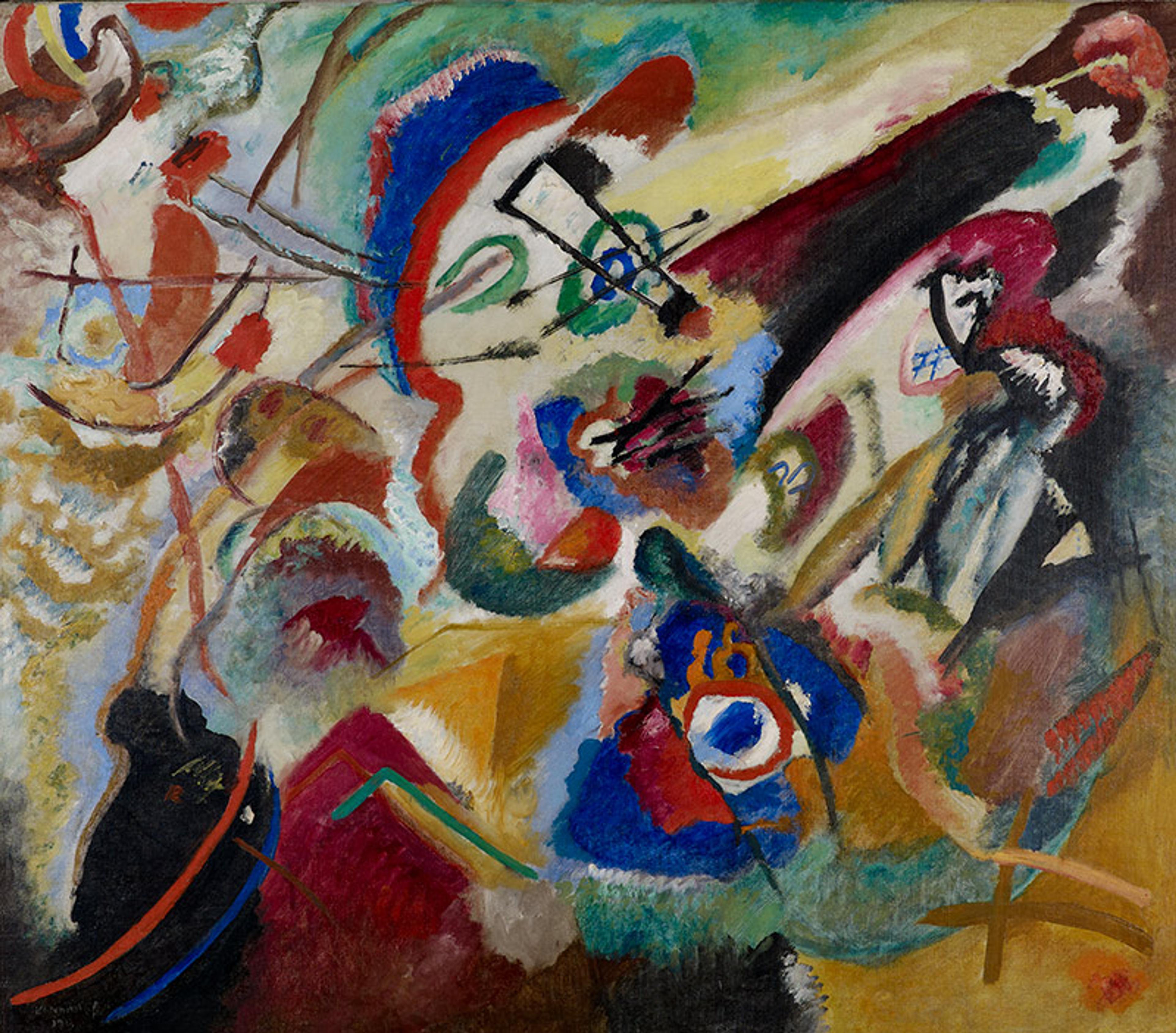
Fragment 2 for Composition VII 1913. Wassily Kandinsky. Courtesy the Buffalo AKG Art Museum
In attempting to answer these questions, we’re up against the so-called ‘hard problem of consciousness’: how a physical brain could underwrite the extra-physical properties of phenomenal experience. And I don’t need to tell you this is a problem that some of our best philosophers have said we’re never going to solve. As the philosopher Jerry Fodor has put it:
[We don’t know], even to a first glimmer, how a brain (or anything else that is physical) could manage to be a locus of conscious experience. This … is, surely, among the ultimate metaphysical mysteries; don’t bet on anybody ever solving it.
Over the past 50 years, I’ve been inching my way towards answers to these questions. From the start, I thought better than to confront the hard problem head-on. Not just because it’s hard, but because it’s the wrong problem.
Many theorists do indeed believe that conscious states are identical to brain states. And, for them, the obvious and best approach to understanding conscious experience is to search for brain events that have phenomenal properties built into their physical structure. This is actually quite an old idea. Going back to the Encyclopaedia Britannica of 1929, for example, you could read:
One theory holds that each atom of the physical body possesses an inherent attribute of consciousness. If each atom, or, in later forms of this theory, each cell of the body emanates its own consciousness, then the ‘self’ must actually consist of an amalgam of all these tiny units of awareness … A second theory assumes that there exist, in the brain, special nerve cells capable of producing consciousness whenever activated … The psychonic theory, based on the correspondences between consciousness and inter-neuronic phenomena, suggests that consciousness occurs each time any unit of junctional tissue between individual neurones is energised.
Today, the language has moved on. For example, ‘integrated information theory’, which is currently fashionable, postulates that phenomenal experience arises directly from the way information is retained and juxtaposed with other information within the brain.
However, as I came to realise, all such physical-identity theories have got off on the wrong foot. They were – and are – attempts to explain how phenomenal properties could be properties of a brain process. But this rests on a fundamental misunderstanding of the kind of thing that needs explaining. Let me emphasise: sensations are ideas. They are the way our brains represent what’s happening at our sense organs and how we feel about it. Their properties are to be explained, therefore, not literally as the properties of brain-states, but rather as the properties of mind-states dreamed up by the brain.
I’ve tried to come up with an evolutionary sequence that will get us from the blindsight of our remote ancestors to the fully phenomenal sight we humans enjoy today
And, once I came to see it this way, the shades fell away. Phenomenal consciousness is the result of a cognitive operation performed by the brain: representing sensory experience in a certain way. Quite possibly, it involves the brain generating something like an internal text, that it interprets as being about phenomenal properties. However, we should no more expect this brain text to have phenomenal properties in its own right than we should expect the text of Moby Dick to be white or whale-like.
My project became to work out how a biological machine like the brain could carry out this feat of representation. And the strategy I’ve adopted has been ‘forward engineering’. That’s to say, I’ve begun with the end product – sensations as humans experience them today; but, rather than treating this, as scientists typically do, as something to deconstruct, I’ve treated it as something to invent. I’ve tried to come up with an evolutionary sequence that will get us from nothingness to somethingness: from the blindsight of our remote ancestors to the fully phenomenal sight we humans enjoy today.
The sequence I propose has several twists and turns. In the accompanying diagrams, I’ve shown it twice over, first as in a primitive organism (see Figure 1 below); and next, as if it were all occurring in a modern human brain (see Figure 2 below).
I believe sensations originated as an active behavioural response to sensory stimulation: something the animal did about the stimulus rather than something it felt about it.
Imagine a primitive amoeba-like animal floating in the ancient seas. Stuff happens to it. Light falls on its body surface, pressure waves press against it, chemicals stick to it. Some of these events are going to be good for the animal, others bad. If it is to survive, it must evolve the ability to sort out the good from the bad, and to respond differently – reacting to this stimulus with an Ouch!, and to that with a Whoopee!
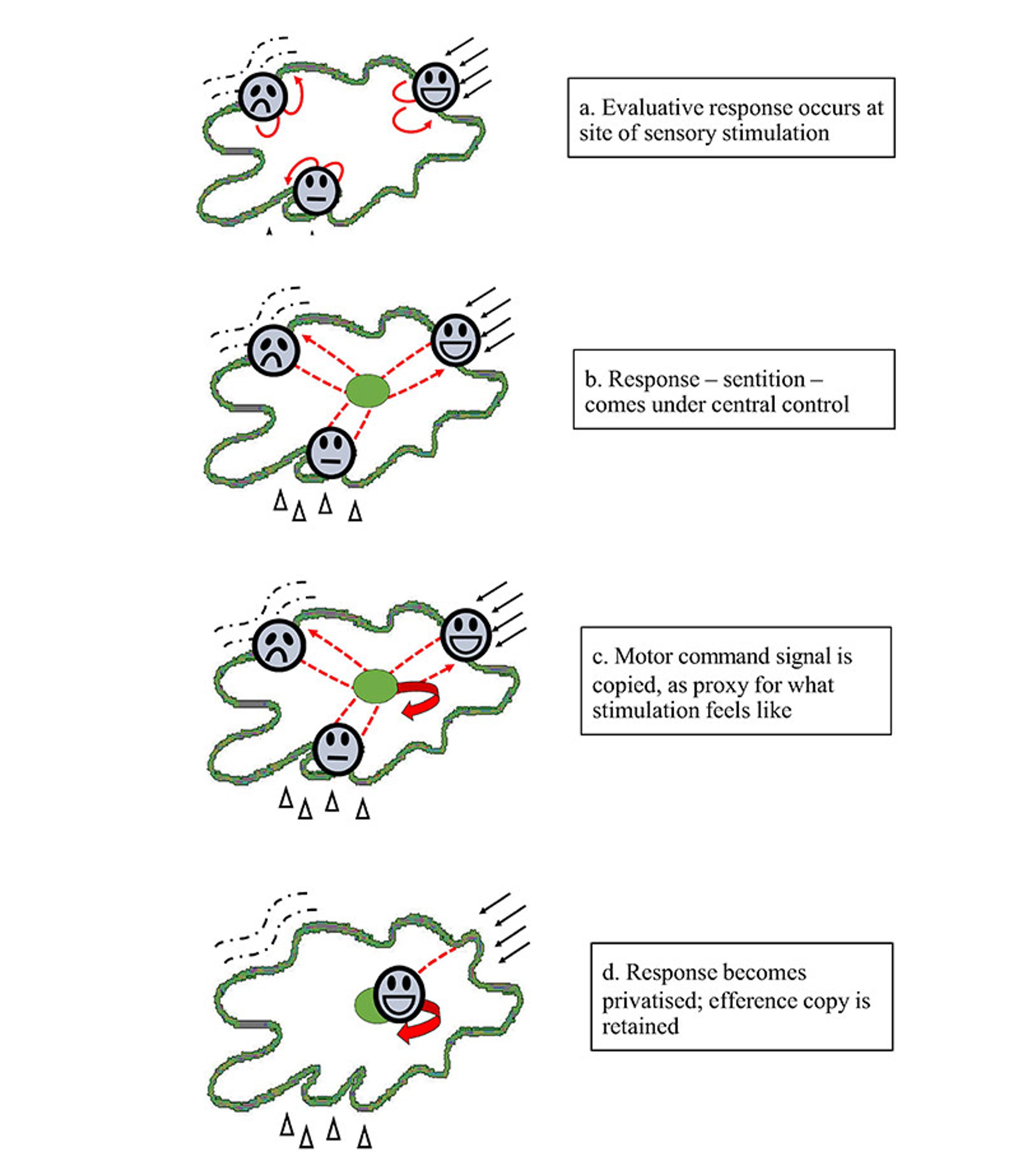
Figure 1: earliest stages, in a primitive organism
I call these expressive responses that evaluate the input ‘sentition’. To start with, they are entirely local responses – wriggles of acceptance or rejection – organised around the site of stimulation (see Figure 1a above). When, say, red light falls on the animal, it makes a characteristic wriggle of activity – it wriggles ‘redly’. When salt arrives, it makes a different kind of wriggle – it wriggles ‘saltily’. But, before long, the responses come to be mediated by a central ganglion, or proto-brain (see Figure 1b above).
From the beginning, sentition has been designed by natural selection to be adaptive, with each response taking account of what kind of stimulus is reaching the body surface, and what import it has for the animal’s wellbeing. Thus, even from the earliest stage, we could say the animal is enacting what the stimulation means to it. Yet, so far, the responses are entirely reflex, and none of this meaning is being held ‘in mind’.
There must come a time when such overt behaviour is no longer appropriate
Let’s imagine, however, that as the animal’s life becomes more complex, it reaches a stage where it would benefit from retaining some kind of ‘mental record’ of what’s affecting it: a representation of the stimulus that can serve as a basis for planning and decision-making. And, as it turns out, there’s a neat way of achieving this. To discover ‘what’s happening to me’, the animal has only to monitor ‘what I’m doing about it’. And it can do this by the simple trick of creating a copy of the command signals for the responses – an ‘efference copy’ that can be read in reverse to recreate the meaning of the stimulation (see Figure 1c above).
In short, the animal can begin to get a feel for the stimulus by accessing the information already implicit in its own response. This, I believe, is the precursor of subjective sensation. But, of course, it will not at first be sensation as we humans know it: it will not have any special phenomenal quality.
The key to acquiring phenomenal properties lies in how sentition goes on evolving. In the early days, it involves bodily behaviour, out in the open. But there must come a time when such overt behaviour is no longer appropriate. The animal no longer wants to recoil reflexly from red light, for example. But it still wants to register that red light is falling on its body and that it feels menacing. So what to do?
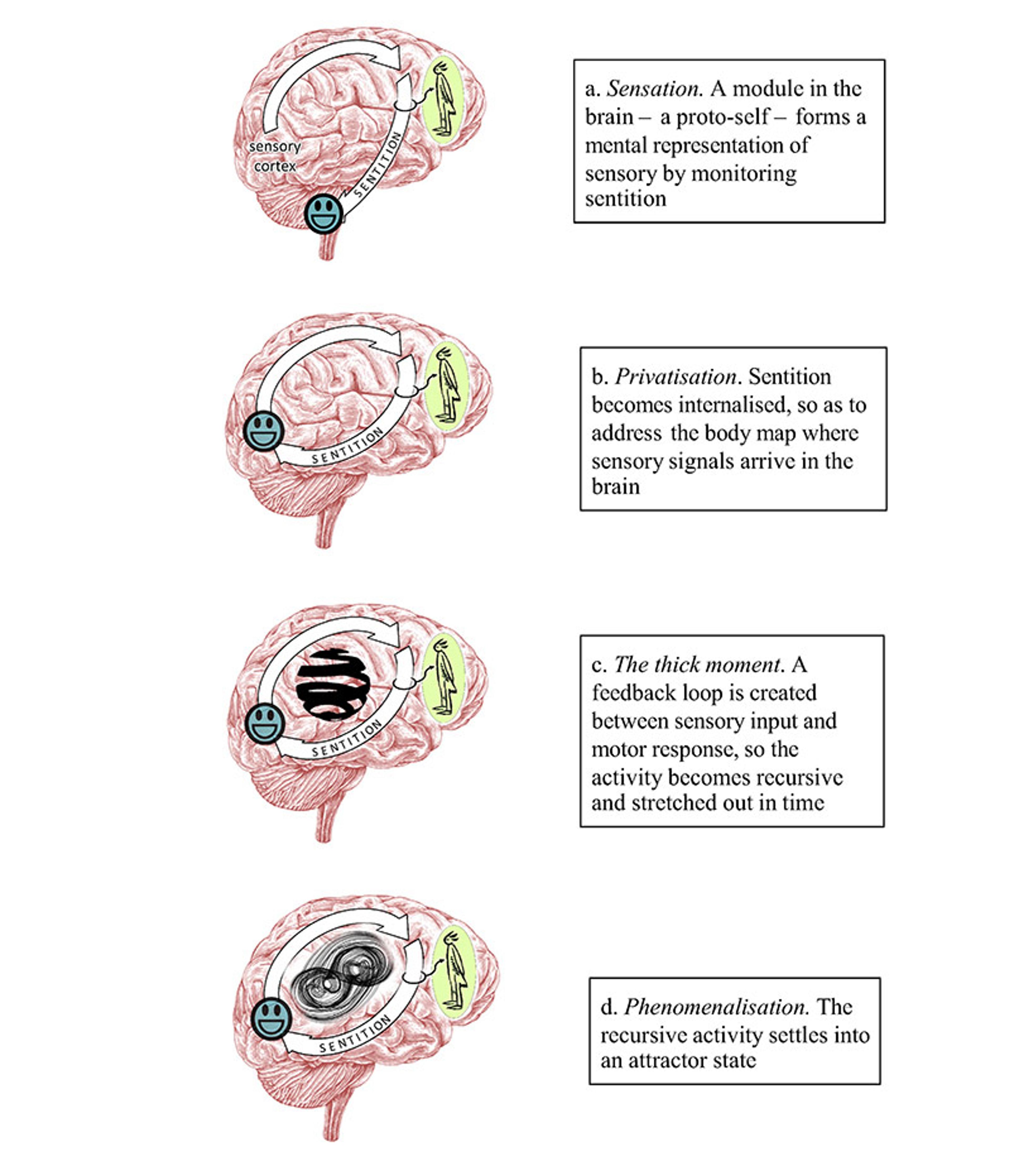
Figure 2: later stages, as in a modern human brain
The answer is for the responses to become internalised or ‘privatised’. What occurs is that the command signals, rather than bringing about actual motor behaviour, begin to target the internal body-map where the sense organs project to the brain (see Figures 1d and 2b above). In this way, sentition evolves to be a virtual form of bodily expression – yet still an activity that can be read to provide a mental representation of the stimulation that elicits it.
But, as luck would have it, the privatisation has a remarkable result. It leads to the creation of feedback loops between motor and sensory regions of the brain. These loops have the potential to sustain recursive activity, going round and round, catching its own tail. And, I suggest, this development is game-changing. Crucially, it means the activity can be drawn out in time, so as to create the ‘thick moment’ of sensation (see Figure 2c above). But, more than that, the activity can be channelled and stabilised, so as to create a mathematically complex attractor state – a dynamic pattern of activity that recreates itself.
Such an attractor can, in theory, have remarkable hyper-dimensional properties. Real, unreal, magical? The answer will be in the eye of the beholder. It means that, from this point on in evolution, whenever it would be beneficial to the animal to ‘improve’ the quality of its sensations, natural selection has a whole new design space to explore. Small adjustments to the circuitry can result in dramatic changes to the attractor’s shape, with corresponding changes in the subjective experience.
I believe the upshot – in the line of animals that led to humans and others that experience things as we do – has been the creation of a very special kind of attractor, which the subject reads as a sensation with the unaccountable feel of phenomenal qualia. This attractor is still a type of sentition, which originates as a response to sensory stimulation, and still carries information about ‘what’s happening to me’. But this information now comes in a remarkable new package. It comes, if you like, as part of a riddle written on the brain (see Figure 2d above).
This is the story only in bare outline, and no doubt it’s only partly right at best. But, with due reservation, I submit that it’s up to the job. Every step is plausible as an evolutionary development. And it leads to an end state that could in principle deliver the kind of phenomenal consciousness we humans possess.
But we still have to address the crucial question: Why? Whatever could have been the biological advantage to our ancestors, and still to us today, of having conscious experience dressed up in this wonderful – and, some philosophers would say, quite unnecessarily exotic – fashion? To quote Fodor again:
Consciousness … seems to be among the chronically unemployed … As far as anybody knows, anything that our conscious minds can do they could do just as well if they weren’t conscious. Why, then, did God bother to make consciousness? What on earth could he have had in mind?
I can’t answer for God. But in answering for natural selection, I think we can and should let first-person intuition be our guide. So, ask yourself: what would be missing from your life if you lacked phenomenal consciousness? If you had blindsight, blind-touch, blind-hearing, blind-everything? Pace Fodor, I’m sure there’s an obvious answer, and it’s the one we touched on when discussing blindsight. It’s that what would be missing would be nothing less than you, your conscious self.
One of the most striking facts about human patients with blindsight is that they don’t take ownership of their capacity to see. Lacking visual qualia – the ‘somethingness’ of seeing – they believe that visual perception has nothing to do with them. Then, imagine if you were to lack qualia of any kind at all, and to find that none of your sensory experience was owned by you? I’m sure your self would disappear.
With this marvellous new phenomenon at the core of your being, you start to matter to yourself in a new, deeper way
So, think back to the transformation that must have taken place when your ancestors first woke up to the experience of sensations imbued with qualia, and – out of nothing – the phenomenal self appeared. Of course, it won’t have happened overnight. But nor need it have been a gradual process either. For the fact is that complex patterns of activity in feedback loops are liable to undergo sudden stepwise changes; attractors have an all-or-nothing character. I believe the reorganisation of the brain circuits responsible for generating phenomenal experience, once started, could have come to fruition quite quickly, perhaps within a few hundred generations.
Whenever it happened, it’s bound to have been a psychological and social watershed. With this marvellous new phenomenon at the core of your being, you’ll start to matter to yourself in a new and deeper way. You’ll come to believe, as never before, in your own singular significance. What’s more, it will not just be you. For you’ll soon realise that other members of your species possess conscious selves like yours. You’ll be led to respect their individual worth as well.
‘I feel, therefore I am.’ ‘You feel, therefore you are too.’
To cap this, you’ll soon discover that when, by a leap of imagination you put yourself in your fellow creature’s place, you can model, in your self, what they are feeling. In short, phenomenal consciousness will become your ticket to living in what I’ve called ‘the society of selves’.
One small step for the brain, one giant leap for the mind.
These ideas, if right, have inescapable implications for the distribution of phenomenal consciousness – which is to say, sentience – across the animal kingdom. So, how can we tell whether an animal species has crossed the line?
There are two crucial considerations. It’s going to depend on the kind of brain the animal has, and the kind of life it leads.
First, there will be no physiological means for generating phenomenal experience unless the animal has a brain that, building on reverberatory sensory-motor loops, can create attractors of the kind we’ve identified. Second, there can have been no evolutionary incentive for the animal’s ancestors to acquire such a brain unless it has a lifestyle in which possession of a phenomenally enriched sense of self can enhance its personal and social survival.
Taking all this into account, I’m led to a surprising – and possibly unwelcome – conclusion. I believe sentience must be a rather recent evolutionary innovation. By far the majority of animals on Earth have neither the brains nor the use for it. To stick my neck out, I’ll be more specific: I suspect that sentience may not have arrived until the evolution of warm-blooded animals, mammals and birds, around 200 million years ago.
I draw the line there for two reasons. The invention of warm-bloodedness had major effects both on animals’ lifestyles and on their brains. On the one hand, becoming warm-blooded will have made animals relatively independent of environmental conditions, giving them a new degree of behavioural and psychological autonomy. This means they will have had more of an incentive to think of themselves and others of their kind as individuals with selves and minds of their own. On the other hand, becoming warm-blooded will have had a dramatic effect on brain activity. Because the conduction speed of nerve cells increases with temperature, the speed of nerve cells in the brain will have more than doubled. I believe this could have made all the difference to establishing the feedback required to fire up the attractor states.
Chimpanzees, dogs, parrots we can be sure of. Lobsters, lizards, frogs we can rule out
Bringing these ideas into the field of animal behaviour, I’ve looked at a range of diagnostic criteria that might apply. Does the animal:
- Have a robust sense of self, centred on sensations?
- Engage in self-pleasuring activities – be it listening to music or masturbation?
- Have notions of ‘I’ and ‘you’?
- Carry their sense of their own identity forward?
- Attribute selfhood to others?
- Lend out their minds so as to understand others’ feelings?
Broadly, these tests confirm my hunch that it’s only mammals and birds who make the cut. Chimpanzees, dogs, parrots we can be sure of. Lobsters, lizards, frogs we can rule out.
Octopuses? They are everybody’s favourite candidate for an outlying species that is sentient. But the behavioural evidence belies this. On the face of it, octopuses don’t find pleasure in sensation-seeking for sensation’s sake; they don’t have a strong sense of themselves as individuals; they don’t attribute selfhood to others; nor do they care.
What about man-made machines? There are, of course, already machines in existence that see and hear and smell at their own level. But, as with lobsters and frogs, it’s presumably blind-seeing, blind-hearing, blind-smelling. Given the life-tasks that nonsentient animals and machines have been designed to accomplish, we can assume that phenomenal blindness leaves them none the worse off.
Nevertheless, let’s suppose that, not so far in the future, human engineers were to want to build robots to undertake a task where sentience and selfhood really might play a role: namely, to survive as significant individuals in a world of other phenomenal selves. Then I can imagine that one day the engineers could in fact take a leaf from Nature’s book and, by duplicating the specialised brain circuits responsible for phenomenal consciousness in humans, build sentience into a machine.
Could it be that sentience has already evolved, independently, in extraterrestrial beings? The distant Universe no doubt already contains many life forms with well-developed sense organs. But surely most of them, as here on Earth, are likely to have remained phenomenally blind. Could that be all of them? Anything is possible in an infinite universe. But that doesn’t mean that sentience, as we Earthlings know it, must have evolved elsewhere.
The astronaut Frank Borman, looking from the window of Apollo 8, remarked that ‘the Earth was the only thing in the entire Universe that had any colour’. That can’t, strictly, be true. But it could still be true that Earth is the only place where beings are capable of experiencing colour qualia in the way we humans – and dogs and pigeons – do: where it’s ‘like something’, like something, like this to see.

